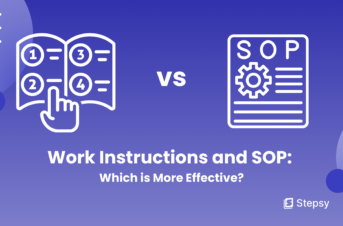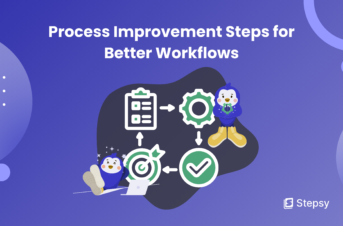Why HR Needs Standard Operating Procedures (SOPs)
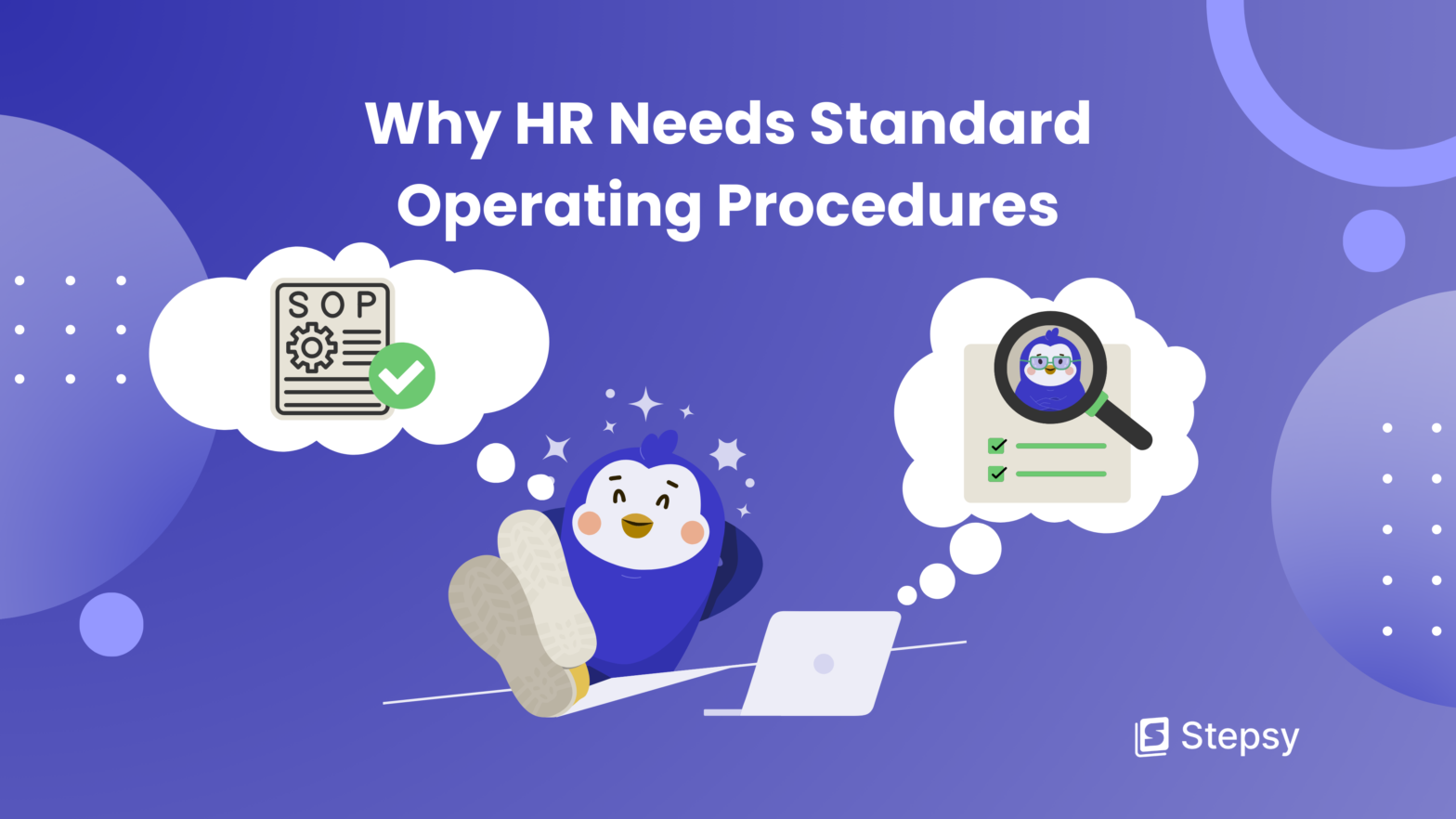
 Iryna Smuk • 25 Jun 2024
Iryna Smuk • 25 Jun 2024
Have you ever wondered how a company ensures all its employees go through the same onboarding process? It’s not magic, but a set of written instructions followed precisely by trained workers.
In the business world, they are called Standard Operating Procedures (SOPs). SOPs are a documented set of step-by-step instructions that describe how to perform specific tasks within an organization.
So, why are HR SOPs so important? Imagine a situation where new employees are hired without a clear onboarding process. Some might receive a comprehensive welcome, while others get a rushed introduction. Such inconsistency can lead to frustration, a lack of understanding of company culture, and ultimately, impact employee retention. That’s where SOPs step in and create a foundation for fairness, accuracy, and quality across all Human Resources functions.
So, let’s take a look at the specific need for SOPs within HR and explore the many benefits they bring.
The Role of SOPs in HR
Ensuring Consistency and Compliance
Human Resources standard operating procedures are indispensable tools, providing a framework that helps ensure consistency and compliance across various HR functions. If you seek the standardization of HR workflows, SOPs can also help maintain uniformity in how tasks are performed. It is the foundation of fairness and efficiency.
Since these instructions provide clear guidelines on task execution, such consistency reduces ambiguity and guarantees everyone follows the same policies and procedures.
The research by The Wynhurst Group shows that new employees who went through a structured onboarding program were 58% more likely to be with the organization after three years.
It can be difficult to keep track of compliance obligations, particularly for recent recruits who are still learning the ins and outs of the relevant procedures and laws. Neglecting to adhere to a legal or regulatory process could have dire consequences. SOPs for HR ensure that nothing is missed and that workers stay compliant without the need for severe supervision from more seasoned staff members.
Here are some examples of HR areas where SOPs are crucial for compliance:
- Recruitment and Hiring: SOPs make certain that the recruitment process from start to finish is free from bias and adheres to Equal Employment Opportunity (EEO) guidelines. This includes standardized job descriptions, interview questions, and candidate evaluation criteria.
- Employee Onboarding: SOPs outline the employee initiation, ensuring that new personnel receive consistent training and information about company policies, benefits, and safety protocols.
- Performance Management: SOPs provide a structured approach to employee performance reviews, guaranteeing that evaluations are conducted fairly and consistently and that workers are aware of the criteria and process in advance.
- Wage and Hour Laws: SOPs can define procedures for timekeeping, overtime pay, and meal breaks, minimizing the risk of violating wage and hour regulations.
- Record Keeping: SOPs specify the procedures for maintaining and protecting employee records in compliance with data protection laws. This includes guidelines on data retention, access, and confidentiality.
Streamlining Human Resources Processes
By streamlining HR operations SOPs are capable of significantly enhancing the efficiency and effectiveness of HR activities, reducing time spent on routine tasks, and freeing up resources for strategic initiatives. They bring structure and order to HR operations.
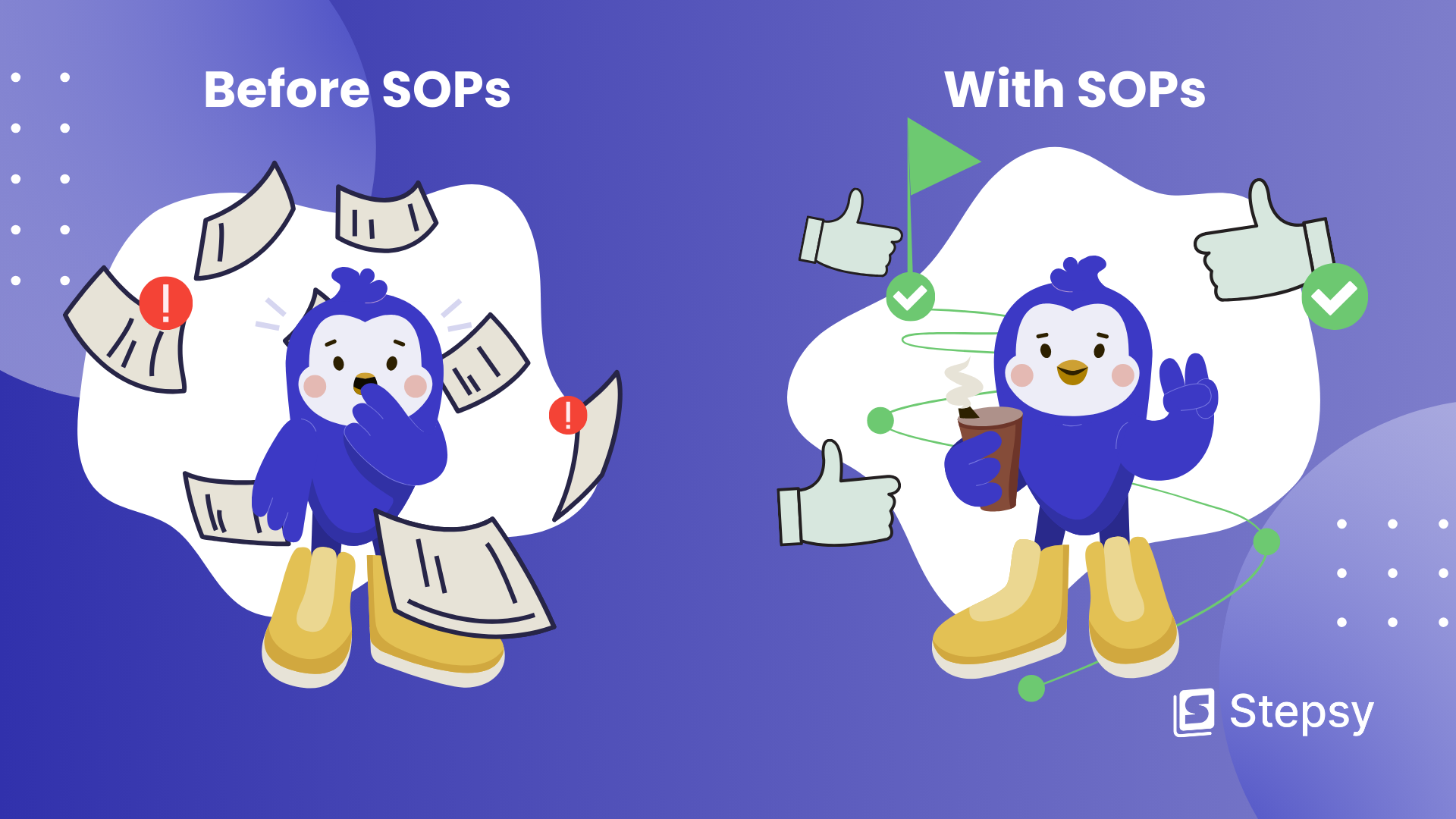
Let’s look at some examples of how SOPs transform HR processes from chaotic to streamlined, improving productivity:
| HR Processes | Before SOPs | With SOPs |
| Recruitment | Inconsistent job postings, varied interview processes, and lengthy hiring times. | Standardized job descriptions, uniform interview questions, and optimized selection mechanism, reducing time-to-hire. |
| Onboarding | New hires face disorganized training, delayed access to materials, and unclear expectations. | New personnel face timely training, access to necessary tools, and clear role understanding. |
| Performance Management | Varied evaluation criteria, inconsistent review schedules, and subjective feedback. | Regulated evaluation forms, set timelines, and structured feedback processes providing fair and consistent reviews. |
| Payroll Processing | Frequent errors in wage calculations, delays in payments, and benefit enrollment issues. | Detailed payroll and benefits SOPs leave no room for errors, ensure timely payments, and simplify benefits administration. |
| Training & Development | Ad hoc training programs with unclear objectives and inconsistent delivery. | Clear guides for training programs, consistent content, objectives, and delivery methods. |
| Record Keeping | Disorganized employee records, difficulty in accessing information, and data security issues. | Systematized procedures for maintaining and protecting records, accessible, and secure data management. |
Moreover, the report from The Aberdeen Group reveals:
- 66% of companies with onboarding programs claimed a higher rate of successful assimilation of new hires into company culture;
- 62% of companies with onboarding programs had higher time-to-productivity ratios;
- 54% of companies with onboarding programs reported higher employee engagement.
Benefits of Standard Operating Procedures for HR
Enhancing Employee Training and Onboarding
HR standard operating procedures provide a structured and consistent approach to training and onboarding new employees. They make sure that every newcomer receives the same information and guidance, reducing the risk of overlooking important details. If companies implement well-documented SOPs, they can reduce the time and assets needed for training new employees.
With SOPs in place, it also becomes easier to review and update training and familiarization processes based on feedback and performance metrics. This facilitates continuous improvement in HR practices, leading to better employee experiences and desired outcomes.
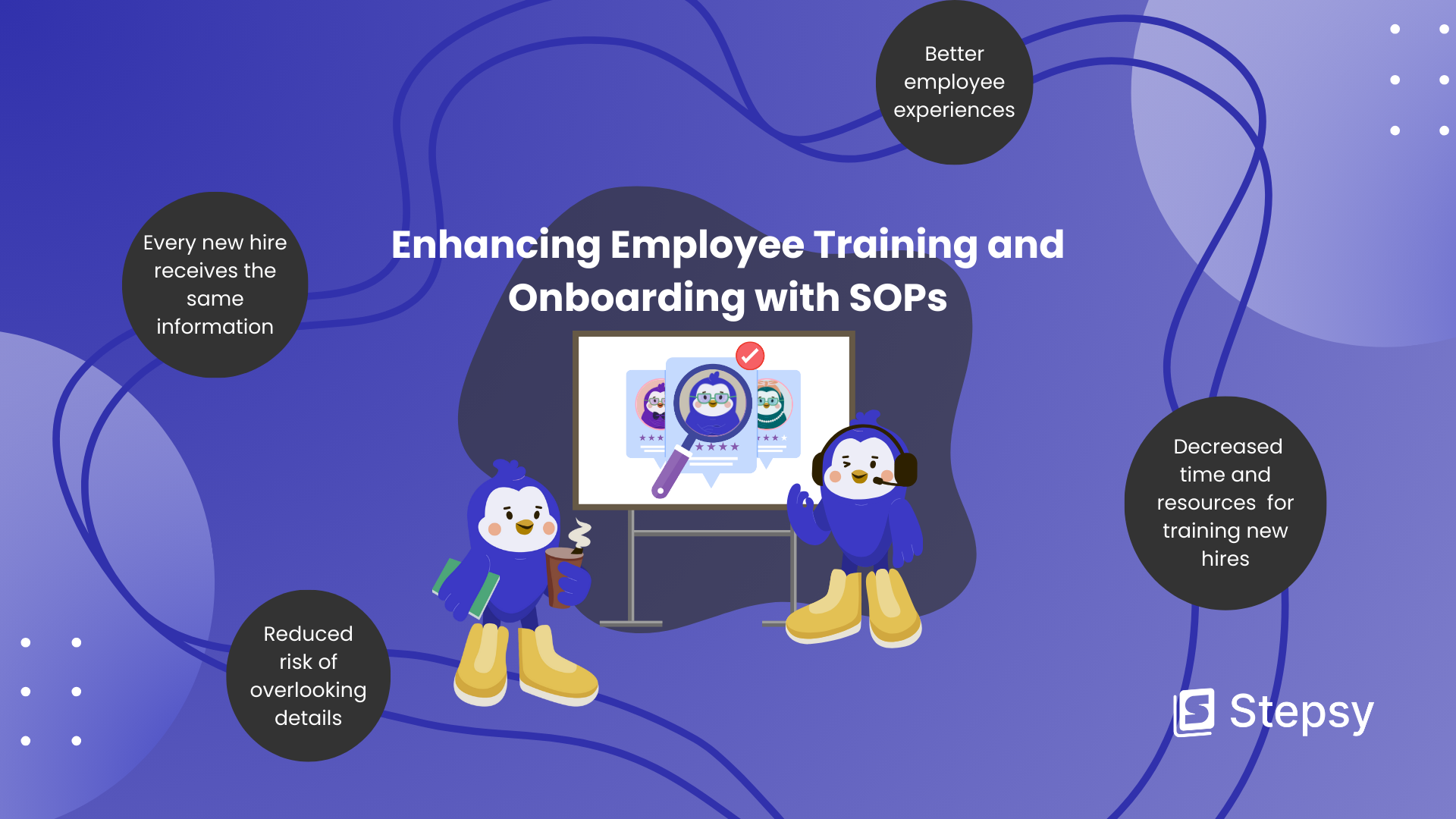
Research has indicated that implementing a methodical onboarding process can accelerate the integration of workers by 50%, hence increasing the speed and efficiency with which new staff can contribute to the attainment of desired goals.
Overall, SOPs serve as a reference point for fresh workforce members as they navigate their new roles.
Improving Communication and Accountability
SOPs may be seen as dry documents outlining business processes. However, their impact goes far beyond simply ensuring tasks are done correctly. Well-crafted SOPs can help to improve communication within the HR department and across the entire organization.
With these instructions, all employees are on the same page regarding what needs to be done and how. Business owners use SOPs to build trust and credibility. Furthermore, a collaborative environment thrives when knowledge is shared and easily accessible.
Another important advantage is that roles and responsibilities are clearly defined within the Human Resource team and throughout the company.
By utilizing SOPs it is easier to hold individuals accountable for their actions. For instance, when standard procedures are not followed by any worker, it is clear where the responsibility lies, which helps in addressing issues promptly and fairly.
Let’s explore some examples of how SOPs can play a significant role in enhancing communication and accountability within various HR functions:
| HR Processes | Before SOPs | With SOPs |
|---|---|---|
| Onboarding | Inconsistent introduction programs, confusion, and lack of essential information. | Improved communication between HR, managers, and fresh team members, better-prepared employees, and smoother transitions. |
| Performance Review | Sporadic performance reviews with no standardized format. | Better communication of expectations, and increased accountability for objective and constructive reviews. |
| Conflict Resolution | Inconsistent handling of employee grievances, leading to dissatisfaction and unresolved issues. | Communication improved significantly, employees know exactly how to report issues and what to expect during the resolution process. |
| Benefits Administration | Lack of accountability for fair evaluations, and employees receive benefits inconsistently. | Accountability for following the defined mechanism of fair evaluations, and consistent communication about benefit options and eligibility criteria. |
Moreover, one study showed that workers wait for information for 5.3 hours per week. Project timelines are severely impacted by these delays, of which 66% may extend for up to a week and 12% for more than a month. Standard operation procedures can help eliminate it.
Challenges and Solutions in Implementing SOPs
Common Challenges and Solutions
For sure, implementing SOPs for Human Resources departments can be a transformative endeavor, but it’s not without its challenges. While some obstacles may arise, understanding them is important for devising appropriate solutions.
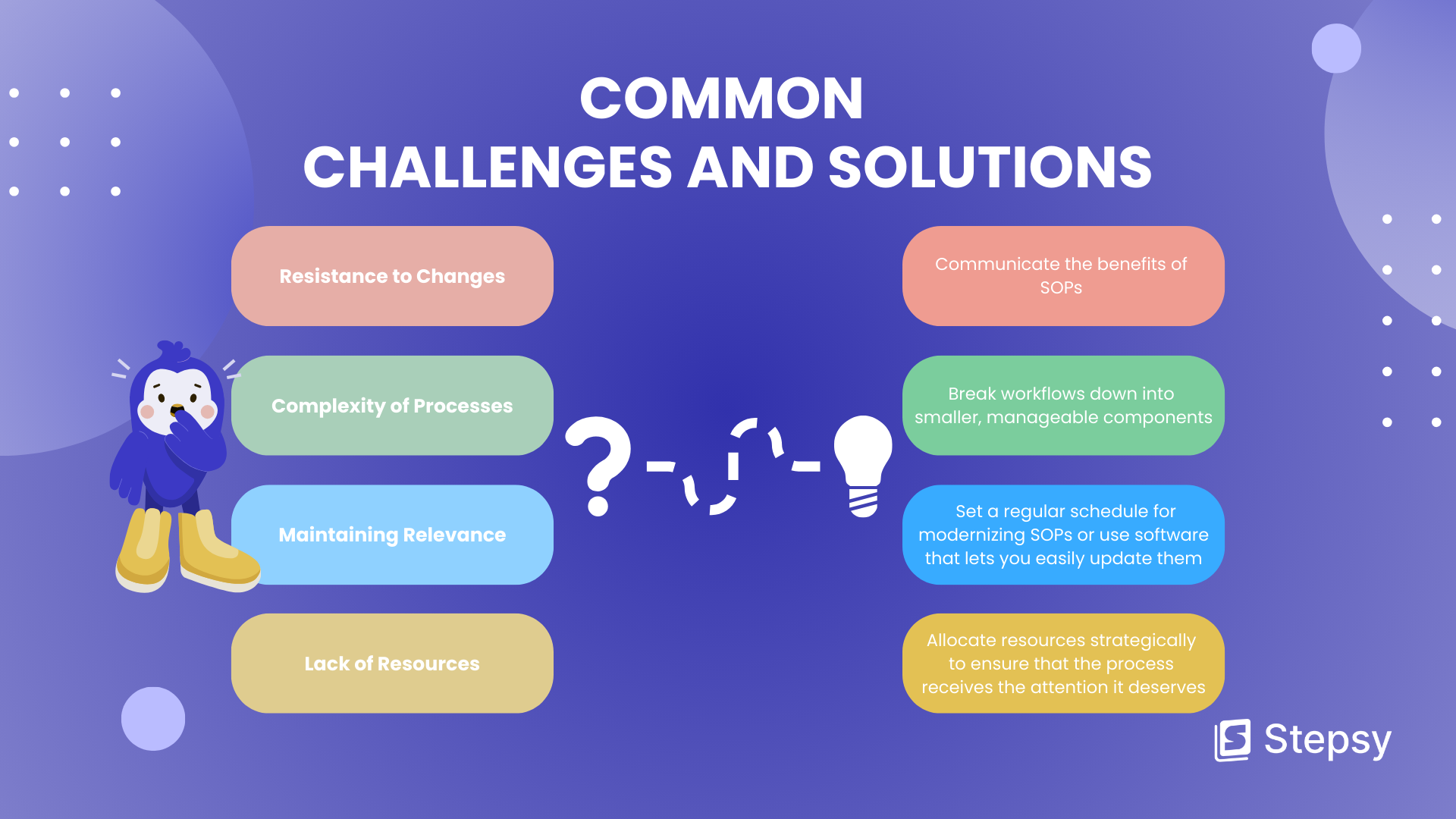
Here’s a look at some common hurdles and how to overcome them:
- Resistance to Changes: When employees resist adopting new processes due to familiarity with existing methods, communication of the benefits of SOPs is a great solution.
- Complexity of Processes: When some HR workflows are intricate, involving multiple steps and stakeholders, breaking them down into smaller, manageable components will help in creating SOPs.
- Maintaining Relevance: Keeping them up-to-date and relevant can be challenging, so set a regular schedule for reviewing and modernizing SOPs or use software that lets you easily update them.
- Lack of Resources: Though developing SOPs requires time, effort, and assets, it is important to allocate dedicated resources strategically to make sure that the process receives the attention it deserves.
Best Practices and Tips
Now that we’ve explored the challenges and solutions surrounding SOP implementation, we can delve into some of the best practices and tips:
- Clearly Define Objectives is Key: When writing SOPs start by clearly defining the objectives of each document to avoid ambiguity.
- Training and Communication: Simply building SOPs isn’t enough, it is essential to conduct employee training and development sessions on how to use them during integration and periodically from that time forward.
- Involve Stakeholders: To maximize SOPs’ effectiveness collaborate and get feedback from the HR team, department heads, and subject matter experts in the SOP development process.
- Accessibility Matters: SOPs should be readily accessible to all relevant personnel, so it is useful to use shared drives.
- Invest in Tools: The automation of creating, managing, and sharing effective Standard Operating Procedures saves the time needed to document the HR’s processes. Some user-friendly software or online platforms eliminate the need for doing the tedious work of manual SOP building by providing templates or auto-generating features.

Conclusion
Hence, Standard operating procedures are more than just dry documents outlining tasks. Proper SOPs are powerful tools that can significantly improve the way HR departments function.
